Migratory Birds
Project Proposal Letter:
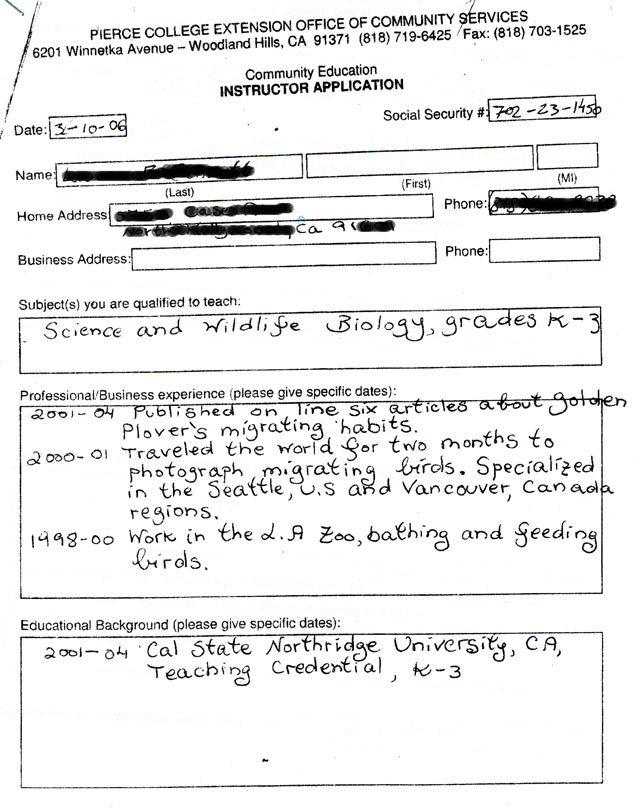
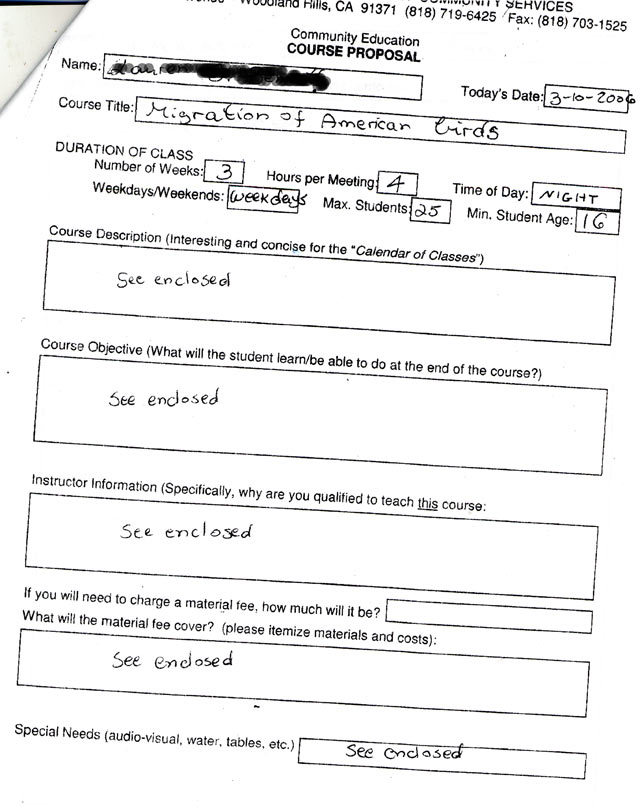
MIGRATION OF AMERICAN BIRDS (instructor: Lauren B. Bennett)
Course description (interesting and concise for the “calendar of classes”):More than 100 species of birds that spend summer in the U.S. completely leave the country to winter over seas. How can we provide them with a modest but rich habitat between their summer and winter home? What menu do the migratory birds prefer? How can we stop birds from hitting our windows? In only a three-night course we will learn how to transform our ordinary back yard into a migratory birds paradise. Apartments’ tenants are welcome too! We will have lots of fun watching birds through a state-of-the-art telescope.
Course objective (What will the student learn/ be able to do at the end of the course?)
- Be able to identify at least two bird species.
- Learn what food migratory birds eat and why, how to stop birds from
hitting our windows, go through a Reality Check of Bird Flu disease.
- Have the experience of using a state-of-the-art telescope to watch birds
migrating at night.
Instructor information (Specifically, why are you qualified to teach this course):
I have a three-year academic background with a CA teaching credential and ten years experience watching American migratory birds indoors and outdoors. I also own a state-of-the-art telescope, which is very useful at night.
If you will need to charge material fee, how much will it be?
$10 for bird foods, $5 for photo copies
Special needs:
This class should take place at night as most birds migrate after sun setting. The classroom’s windows should be large, open and clean at all times. Bird’s food should be provided only in the last session of the course.
Course content (session by session breakdown of curriculum):
- Introduction to American birds and their migration habits. Discussion
on the reasons birds migrate at night. Watch slides from my two months
travel in North America, April-May 2000. Watch “Short Movie”, a short
movie listing all the dates of annual departure and return of all
the American birds discovered in the last 100 years. Discussion on the
new Swedish studies exploring flight plans and patterns of migrating birds.
- Watching two TV segments presenting the life of my favorite
American birds: the Arctic Tern and the King Eider. Discussion on how
to attract migrating birds to our back yard; what healthy menu should be
offered, what junk food should never be served and why, how to stop
migrating birds from hitting our windows, and how to build a bird habitat
in a mansion’s back yard or a small crowded apartment. Discussion on
the recent data about Bird Flu, taken from popular websites.
- Presentation of common and not so common bird foods from diverse
cultures. Introducing my state-of-the-art telescope. Watching migrating
birds in class through the classroom windows till the wee hours of the
morning after.
Response from Institution:
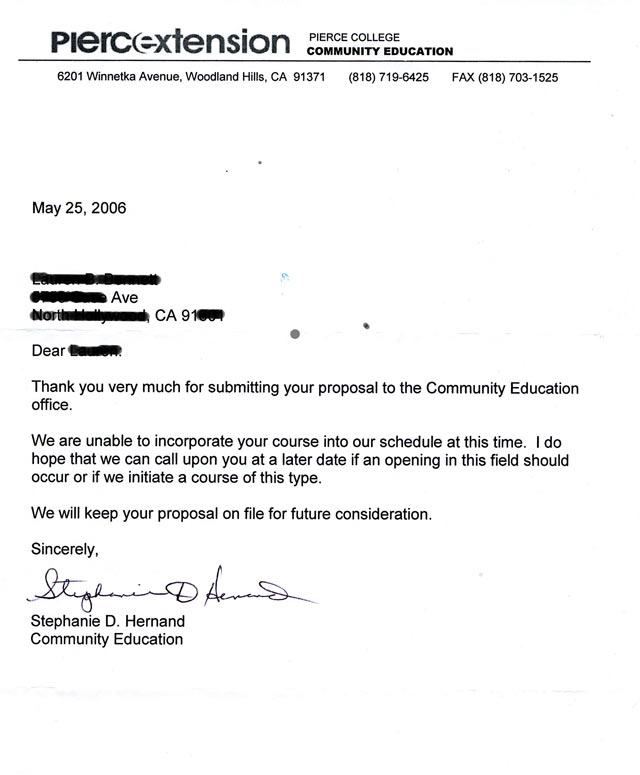
Artwork Created:
Lucy HG, USA | view biography
My initial directive was to represent in a visual manner the general concept of migration in nature. Since migration and flight are subjects I have tackled in the past, I culled images from my study of the physics of flight in the Imaginary Science series. The subject of birds and a scientific examination of flight led me to consider the geopolitical context of migration – human beings in flight. The result is a set of postcards titled In Transit…postcards for refugee camps. The individual postcards contain half-legible text over images of insects, birds, paper airplanes and helicopters. They read, “departure,” “flight,” “relocation,” and “migration.”
(Lucy HG)
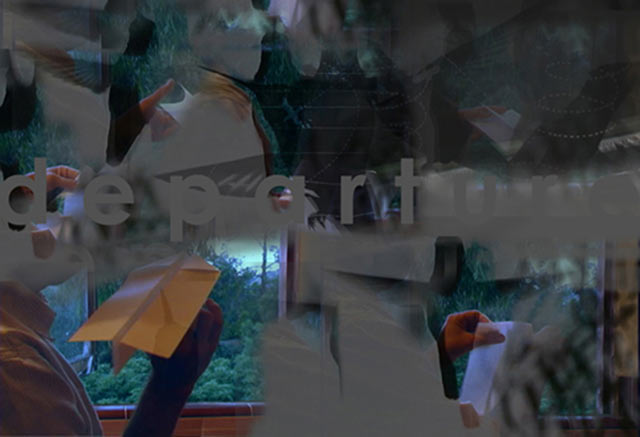
Lucy HG, Departure
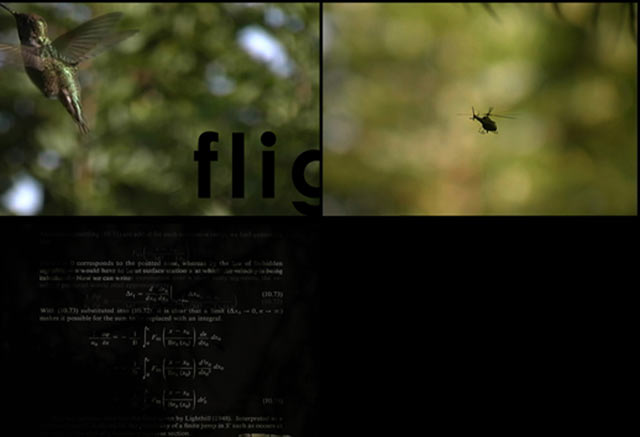
Lucy HG, Flight

Lucy HG, Migration

Lucy HG, Relocation

Lucy HG, Postcard
Jackie Cytrynbaum, CANADA | view biography
“No matter how far or wide we travel, all predispositions and proclivities come along for the ride. The albatross migrating to Mars will maintain the habits that it has on earth. The striated herons conduct themselves in a manner most natural when they deface Saturn. These instinctive behaviors are boundaries by virtue of being instinctive. They are internal cages. If we have polluted earth, what makes us think we won’t pollute Mars? If we have fought among ourselves on earth, why won’t we fight on Jupiter? Regardless of where we are, we are governed and bound by our internal cages.”
(Jackie Cytrynbaum)
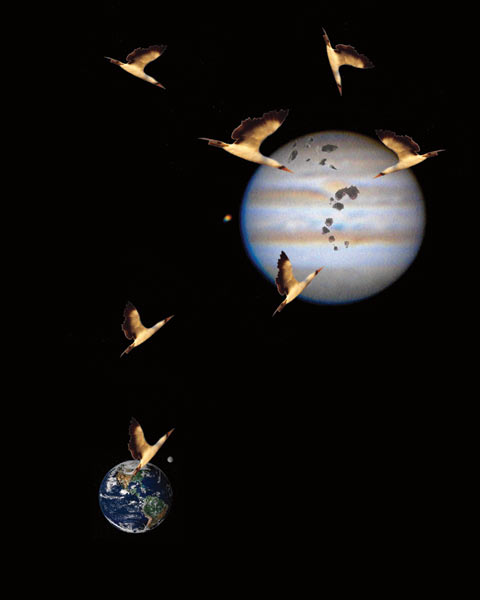
Jackie Cytrynbaum, Invasion of Jupiter
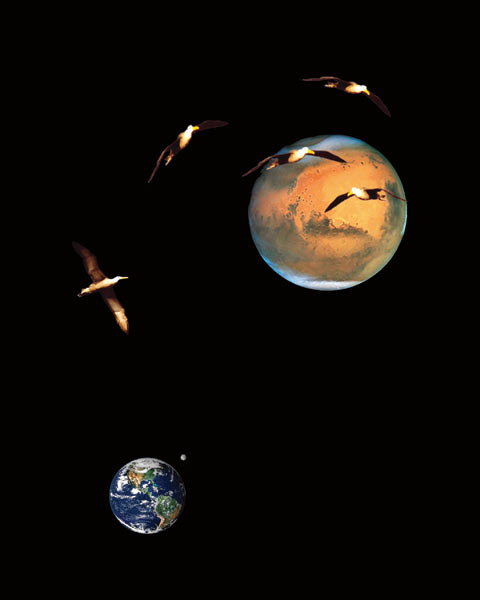
Jackie Cytrynbaum, Migration to Mars
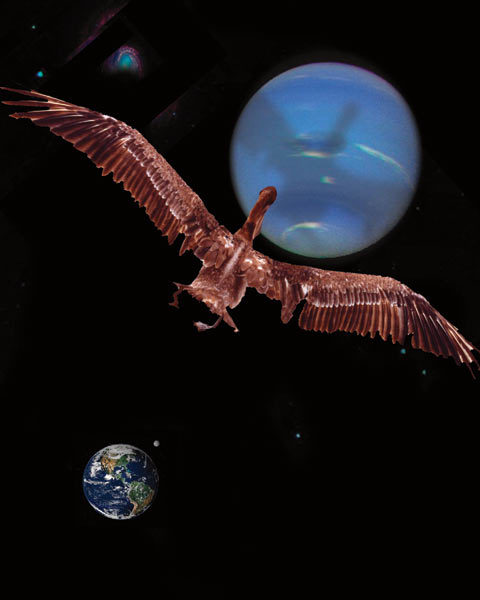
Jackie Cytrynbaum, Striated Herons on Saturn
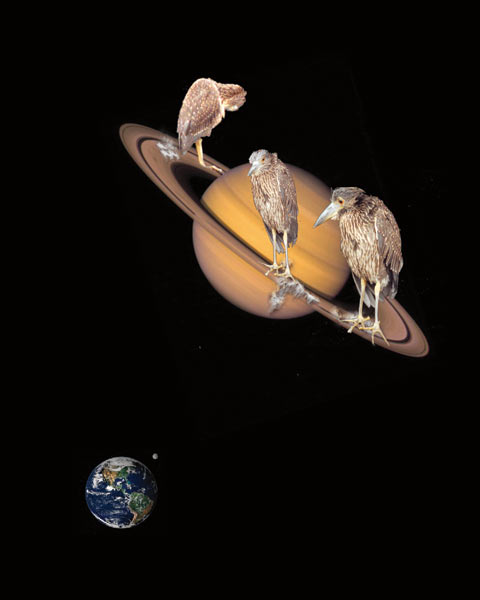
Jackie Cytrynbaum, Striated Herons on Saturn
back to top | back to projects
